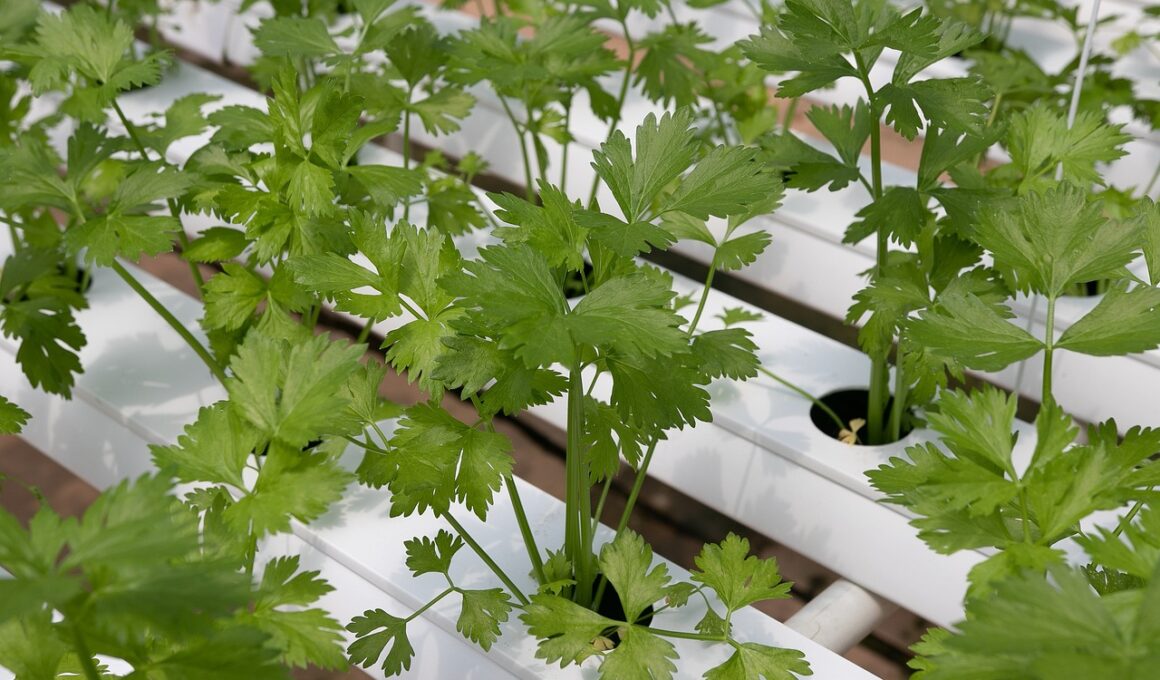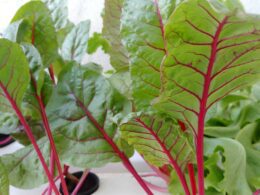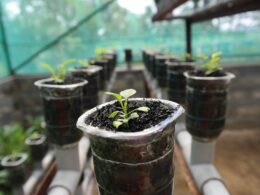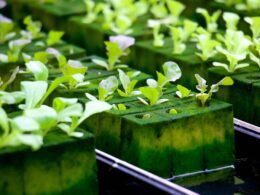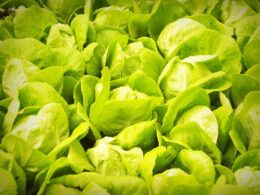Are you interested in hydroponics, but worried about the risk of bacterial contamination, particularly from E. coli? Well, you’re not alone. Many people are concerned about the potential dangers of growing plants in a water-based system.
Fortunately, there are several measures you can take to prevent E. coli from contaminating your hydroponic setup.
First, it’s essential to understand the risks associated with bacterial contamination in hydroponics. Because hydroponics relies on water as the primary growing medium, any bacteria present in the water can easily spread throughout the entire system. E. coli is one of the most common bacterial contaminants found in water, and it can cause serious health issues if ingested.
However, by taking a few simple steps, you can minimize the risk of E. coli contamination and enjoy the benefits of hydroponic gardening with peace of mind.
Understand the Risks of Bacterial Contamination in Hydroponics
You need to be aware of the risks associated with bacterial contamination in your hydroponic setup. E. coli is one of the most common and dangerous types of bacteria that can infect your plants. There are several different strains of E. coli that can cause illness in humans, so it’s important to be vigilant and take steps to prevent contamination.
To prevent E. coli contamination in your hydroponic system, you should monitor your plant health regularly. This means checking for signs of disease or stress, such as wilting, yellowing leaves, or stunted growth. If you notice any of these symptoms, it’s important to take action right away to prevent the spread of bacteria.
You can also use a pH meter to monitor the acidity levels in your system, as E. coli thrives in a pH range between 6.5 and 7.5.
In addition to monitoring plant health, it’s important to practice good hygiene when working with your hydroponic setup. This includes washing your hands thoroughly before and after handling your plants, disinfecting any tools or equipment that come into contact with your plants, and keeping your growing area clean and free of debris.
By taking these simple steps, you can help prevent E. coli contamination and keep your hydroponic system healthy and thriving.
Ensure High-Quality Water Sources
Make sure your water sources are of high quality to maintain a healthy environment for your hydroponic system. Bacterial contamination can occur if the water used is not properly filtered, so it’s essential to use water filtration techniques that will help remove impurities and harmful microorganisms.
You can also choose to use appropriate nutrient solutions that will help keep your plants healthy and prevent the growth of harmful bacteria. One way to ensure high-quality water is to use a reverse osmosis filtration system. This system uses a semi-permeable membrane to remove impurities from the water, such as minerals, bacteria, and viruses. The result is purified water that is safe for your hydroponic system.
Using this filtration system can help prevent the growth of harmful bacteria and keep your plants healthy. Another way to maintain high-quality water is to choose appropriate nutrient solutions. These solutions provide the necessary nutrients for your plants to grow, but they can also be a source of bacterial contamination if not properly maintained.
Make sure to follow the manufacturer’s instructions for preparing and maintaining the nutrient solution. By doing so, you can prevent the growth of harmful bacteria and ensure that your plants receive the necessary nutrients for optimal growth.
What Steps Can I Take to Avoid E Coli Contamination in Hydroponically Grown Lettuce?
Hydroponically grown lettuce offers numerous benefits, but it’s crucial to be aware of e coli risks in hydroponic lettuce. To avoid contamination, start by properly washing your hands before handling any lettuce. Also, ensure that the water used in the hydroponic system is clean and free from any harmful bacteria. Regularly sanitize the equipment and maintain a sterile growing environment. Lastly, purchase lettuce from reputable sources that prioritize food safety and follow strict quality control measures.
Properly Sanitize Your Hydroponic Equipment
To ensure the cleanliness and health of your hydroponic system, it’s essential to properly sanitize all equipment used in the process. Sanitization techniques involve using chemicals and physical cleaning methods to eliminate harmful bacteria or pathogens that could contaminate your plants.
Here are some tips to properly sanitize your hydroponic equipment and maintain a healthy system:
- Use a diluted bleach solution or hydrogen peroxide to clean all surfaces and equipment thoroughly.
- Regularly clean and replace any filters, pumps, and tubing to prevent any buildup of bacteria or debris.
- Monitor and maintain the pH and nutrient levels of your hydroponic system to ensure optimal plant growth and avoid any stress that could weaken the plants’ immune system.
Taking these steps to sanitize and maintain your hydroponic equipment will not only prevent the growth and spread of E. coli but also promote healthy plant growth and increase the yield of your crops. By prioritizing cleanliness and proper maintenance, you can enjoy the benefits of hydroponic gardening without any worries about harmful bacteria or pathogens affecting your plants.
Follow Good Hygiene Practices
Maintaining good hygiene practices is essential for a healthy and thriving hydroponic system, ensuring that your plants receive the necessary care and attention they need to grow. One of the most effective ways to prevent E. coli and other harmful bacteria from contaminating your hydroponic setup is by washing your hands thoroughly before handling any equipment or plants. Make sure to use soap and warm water for at least 20 seconds to eliminate any harmful germs that may be present on your skin.
Another important aspect of maintaining good hygiene in hydroponics is to regularly clean and disinfect your equipment. After each use, rinse your equipment with clean water to remove any debris or residue. Then, use an approved disinfectant to sanitize your equipment before storing it. By doing so, you can eliminate any bacteria that may be present on your equipment and prevent them from spreading to your plants.
In addition to using hygiene techniques for your equipment, there are also health benefits to maintaining good hygiene practices in your own life. Make sure to eat a healthy diet, get enough sleep, and exercise regularly to boost your immune system. By taking care of yourself, you can reduce the risk of getting sick and spreading harmful bacteria to your plants. Remember, prevention is key when it comes to keeping your hydroponic system healthy and thriving.
Implement Preventative Measures to Minimize the Risk of E. coli Contamination
Implementing preventative measures to minimize the risk of E. coli contamination is crucial for the overall health and success of your hydroponic system. One of the key factors in preventing E. coli is through proper hydroponic system design. Ensure that your system has a proper filtration system and that the water source is clean and free from any harmful bacteria.
It’s also important to regularly clean and sanitize your hydroponic system to prevent the buildup of harmful bacteria.
Another factor to consider is crop selection. Some crops, such as lettuce, have been known to be more susceptible to E. coli contamination. It’s important to research which crops are less susceptible and choose those for your hydroponic system.
Additionally, make sure to properly wash and sanitize all produce before consuming.
Incorporating preventative measures into your hydroponic system can not only prevent E. coli contamination but also promote overall safety and success. By taking the time to properly design your system, regularly clean and sanitize it, and carefully select crops, you can reduce the risk of harmful bacteria and ensure the health of both yourself and your plants.
Frequently Asked Questions
What are the symptoms of E. coli contamination in hydroponics?
If you suspect that your hydroponic system may be contaminated with E. coli, it’s important to know the symptoms to look out for. These can include abdominal cramps, diarrhea, and vomiting.
To prevent E. coli contamination in your system, there are several prevention methods you can implement. First, make sure to always wash your hands thoroughly before working with your hydroponic system. Additionally, regularly sanitize all equipment and surfaces that come into contact with your plants or water.
You can also use detection techniques such as testing your water for bacteria levels and regularly monitoring your plants for any signs of wilting or discoloration. By taking these precautions, you can help ensure the safety of your hydroponic system and the plants you grow.
Can E. coli contamination in hydroponics affect the taste or quality of the produce?
If your hydroponic system is contaminated with E. coli, it can have a significant effect on the yield and quality of your produce. The bacteria can cause the plants to wilt, turn yellow, and even die.
In addition to the physical damage to the plants, E. coli can also affect the taste and nutritional value of the produce. To prevent E. coli contamination in hydroponics, there are several techniques you can use.
First, make sure to use clean water and regularly sanitize your hydroponic system. You should also use food-grade materials and avoid using contaminated soil or plant debris. Finally, be sure to test your water and plants regularly for any signs of contamination and take immediate action if you detect any issues.
By taking these steps, you can help ensure that your hydroponic system stays free of E. coli and that your produce remains safe and healthy for consumption.
How often should hydroponic equipment be sanitized to prevent E. coli contamination?
To prevent E. coli contamination in your hydroponic system, it’s important to establish a regular sanitation routine. Sanitation frequency will depend on the size of your system and the type of equipment you’re using. However, it’s generally recommended to sanitize your equipment at least once a week.
Best practices for sanitation include using a mild, non-toxic solution to clean your equipment and avoiding harsh chemicals that could harm your plants. Additionally, it’s important to regularly monitor your system for any signs of contamination or plant disease. If any issues arise, promptly address them.
By following these simple steps, you can help ensure the safety and quality of your hydroponic produce.
Are there any natural or organic methods for preventing E. coli contamination in hydroponics?
If you’re looking for natural or organic methods to prevent E. coli contamination in hydroponics, you might want to consider using organic disinfectants or beneficial microbes.
Organic disinfectants, such as hydrogen peroxide, vinegar, or citric acid, can be effective at killing harmful bacteria without leaving behind harmful residues.
Beneficial microbes, on the other hand, can help to establish a healthy microbial community in your hydroponic system, which can prevent pathogenic bacteria from taking hold.
By using these methods, you can reduce the risk of E. coli contamination in your hydroponic system while still maintaining an organic and sustainable approach.
What should I do if I suspect E. coli contamination in my hydroponic system?
If you suspect E. coli contamination in your hydroponic system, there are a few steps you can take to address the issue. First, you should immediately stop using any contaminated produce and dispose of it properly.
Next, you should test your system for E. coli using appropriate testing methods. It’s important to identify the source of the contamination, whether it’s from contaminated water or nutrient solutions, pests, or other factors.
Once you’ve identified the source, you can take steps to eliminate it and prevent future contamination. Regular monitoring and maintenance of your hydroponic system can help prevent E. coli contamination from occurring in the first place.
Conclusion
So, how can you prevent E. coli contamination in your hydroponic system?
First, it’s important to understand the risks of bacterial contamination and the potential health hazards it can cause. To minimize the risk of contamination, ensure that you use high-quality water sources and properly sanitize your hydroponic equipment.
Follow good hygiene practices and implement preventative measures such as using clean growing media and avoiding overcrowding plants. One easy and effective way to prevent E. coli contamination is by incorporating beneficial bacteria into your hydroponic system.
These ‘good’ bacteria can help to crowd out harmful pathogens and create a healthier growing environment for your plants. By taking these precautions, you can enjoy the many benefits of hydroponic gardening while keeping your system free from harmful bacteria.





